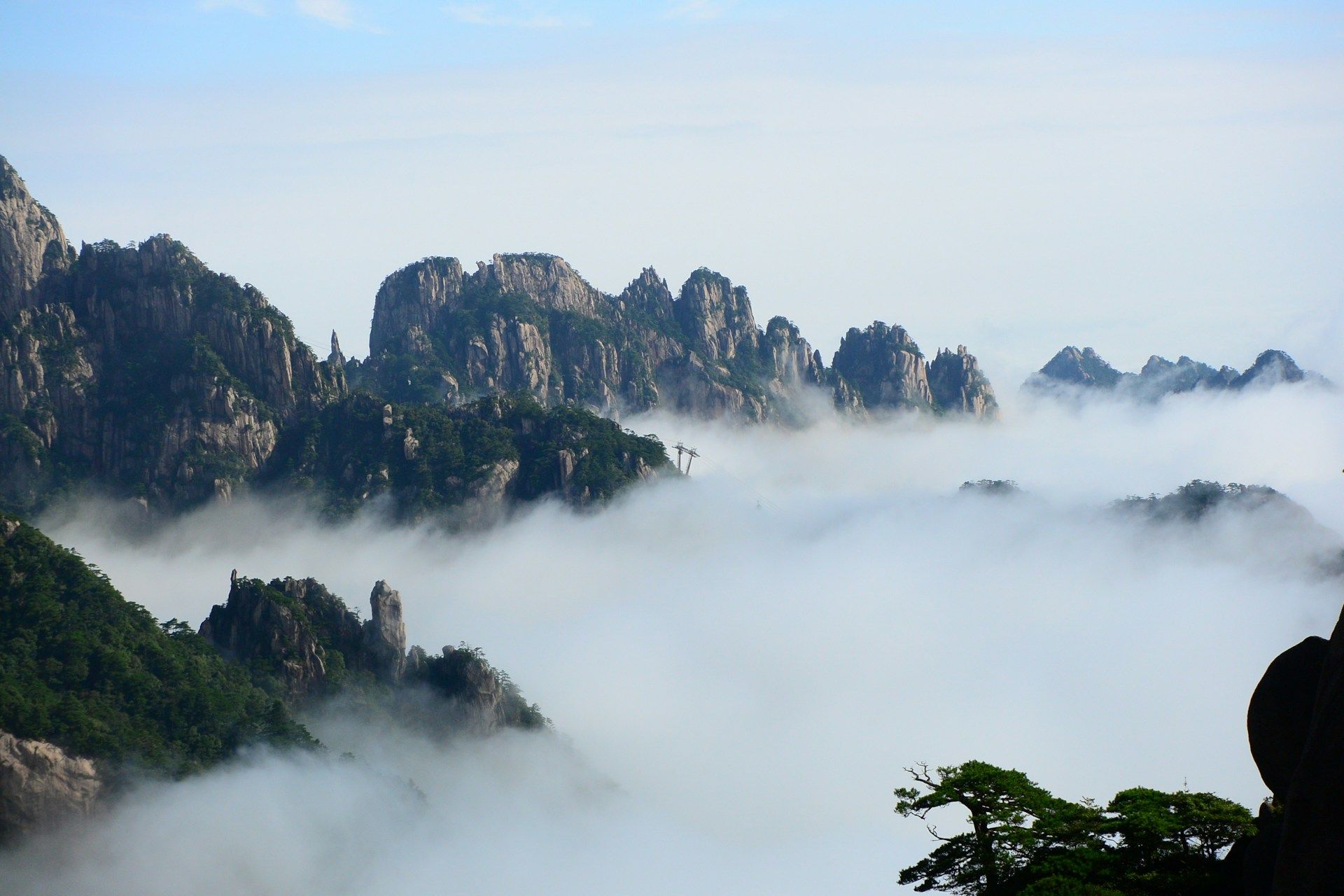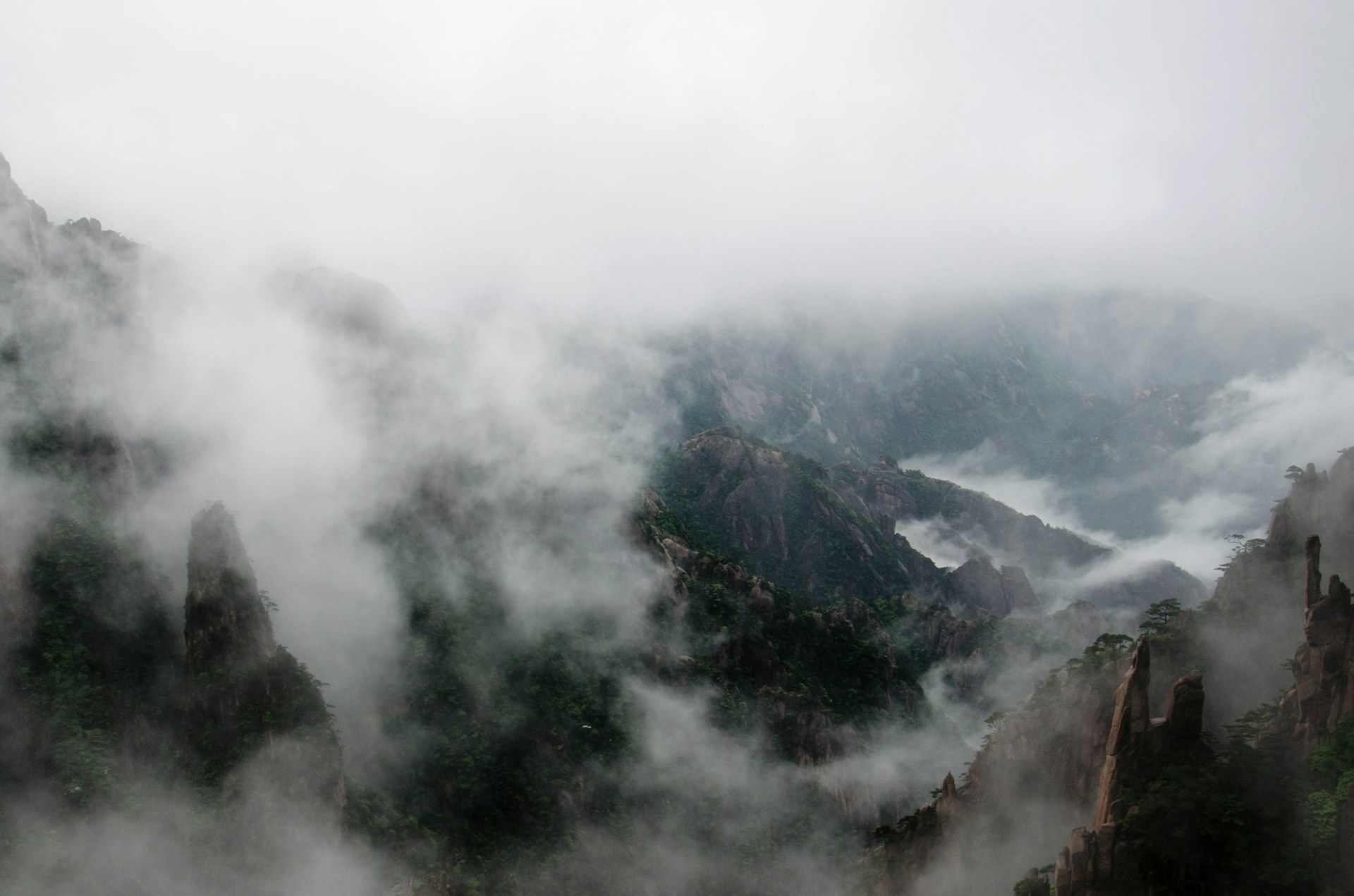Alla scoperta di Huangshan: Oltre le nuvole, i miti e i pini
Bruce Li•Sep 23, 2025
Facciamo un viaggio insieme in uno dei luoghi più incredibili dell’Asia. In questo articolo, ti offriamo un viaggio nel cuore della Montagna Gialla in Cina.
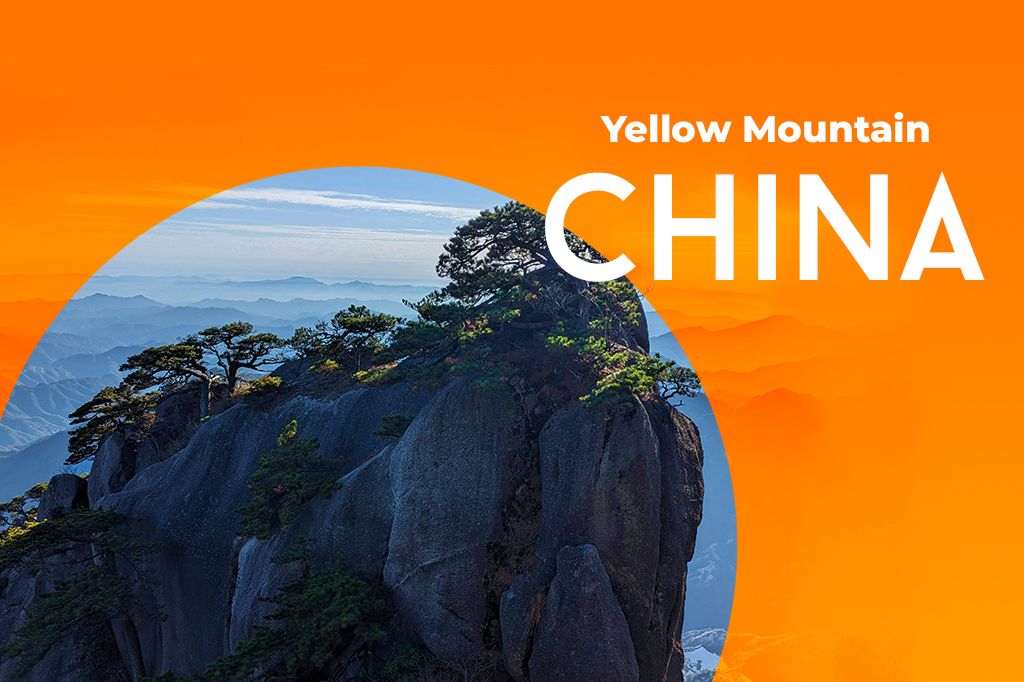
Foto di David Magalhães su Unsplash
La Cina ha numerosi luoghi incredibili da esplorare, e abbiamo già parlato di alcuni di essi, inclusi i posti più belli da visitare e alcune gemme nascoste che vale la pena scoprire. Tuttavia, oggi approfondiremo una delle catene montuose più iconiche e mistiche della Cina: Huangshan (黄山), comunemente conosciuta come la Montagna Gialla.
Probabilmente hai già visto qualche foto, e sembra davvero un’esperienza molto scenografica, ma c’è molto di più. Questo luogo ha avuto un posto molto importante nel mito, nella filosofia e nell’arte cinese, ed è questo che vogliamo condividere con te oggi.
Ma prima di iniziare il nostro viaggio verso la Montagna Gialla in Cina, avrai bisogno di un modo per rimanere connesso e condividere tutte le foto e i video che scatterai con i tuoi amici e la tua famiglia. Usa questo viaggio per provare l’eSIM gratuita di Yoho Mobile! Scopri quanto è facile da installare e usa il codice promozionale YOHO12 per il 12% di sconto sui viaggi futuri!
Perché viaggiare a Huangshan, la Montagna Gialla in Cina?
Iniziamo con una domanda molto semplice: perché vorresti viaggiare sulla Montagna Gialla in Cina? La maggior parte dei viaggiatori, quando interrogata, fornisce alcune delle seguenti ragioni.
-
Straordinaria Bellezza Naturale: L’area è incredibilmente bella, con aspre cime di granito, un’atmosfera surreale con le valli coperte di nebbia e gli antichissimi pini che si aggrappano alle rocce. Se vai abbastanza presto, puoi vedere il sole emergere da un mare di nuvole.
-
Passeggiare nell’Arte Cinese Vivente: Non devi essere un erudito per riconoscere queste montagne in molti dipinti, poesie e calligrafie cinesi classiche. Per molte persone, camminare lungo i sentieri è come entrare in un dipinto.
-
Un luogo di riflessione spirituale: Come esseri umani, abbiamo una connessione spirituale con le alte montagne, e la Montagna Gialla non fa eccezione. È stato un luogo sacro per molti secoli, come si può vedere dai numerosi templi e iscrizioni, ed è ancora un luogo di pace, contemplazione e ispirazione.
Perché mitizziamo le montagne?
La Montagna Gialla è lungi dall’essere l’unica montagna legata a leggende locali e venerata come luogo sacro. Ad esempio, c’è il Monte Olimpo in Grecia, dove vivevano gli dei, il Monte Fuji in Giappone, simbolo di bellezza e distruzione, e Machu Picchu in Perù, un luogo sacro che venera la montagna e lo spirito che la proteggeva.
Questo fenomeno universale deriva dal fatto che le montagne sono viste come soglie verso il mondo spirituale, essendo così vicine ai cieli che erano abitate da dei, antenati o spiriti. Se hai mai scalato una montagna, sai che è un compito fisicamente e mentalmente impegnativo, che spesso porta alla scoperta di sé e alla purificazione spirituale.
Le leggende legate alla Montagna Gialla
Il nome stesso della montagna deriva da un’antica leggenda cinese sull’Imperatore Giallo. Si narra che l’Imperatore Giallo, un antenato mitologico del popolo cinese, si recò sulla montagna in cerca dell’elisir dell’immortalità.
Lavorò duramente, notte e giorno, e dal suo lavoro alchemico, la montagna ottenne le sue sorgenti termali e le erbe medicinali. Infine, quando riuscì, ascese al cielo dalla cima della montagna.
Ma questa non è l’unica leggenda legata alla montagna; si dice anche che esseri immortali visitino la montagna travestiti da viaggiatori o eremiti. C’è anche un pino, conosciuto come il “Pino dell’Ospite Accogliente”, che si inchina rispettosamente per dare il benvenuto ai visitatori, e una roccia che assomiglia a una scimmia; si crede che sia un umano così devoto da essere stato trasformato in roccia. Ora attende per l’eternità, guardando il mare di nuvole, una persona amata che un giorno potrebbe tornare.
Cos’è il Mare di Nuvole?
Il “Mare di Nuvole” è uno dei fenomeni naturali più affascinanti che si possano ammirare in montagna. È una caratteristica distintiva della montagna, che contribuisce notevolmente alla sua presenza mistica, avendo affascinato viaggiatori, poeti e pittori per secoli.
È, in poche parole, uno strato ondoso di nebbia e nuvole che spesso si deposita sotto le cime, coprendo le valli e le pendici inferiori della montagna. Dalla vetta, crea l’illusione di trovarsi di fronte a un oceano bianco con cime di granito che emergono come isole.
Sentieri meno battuti nella Montagna Gialla
La maggior parte dei visitatori per la prima volta percorre sentieri come il Canyon del Mare Occidentale e il classico sentiero dal Picco dell’Alba al Picco del Loto. Entrambi questi percorsi sono incredibilmente belli e ottime opzioni, ma sono anche piuttosto popolari e possono diventare affollati durante l’alta stagione.
Se stai cercando sentieri meno battuti, ecco alcuni suggerimenti per te.
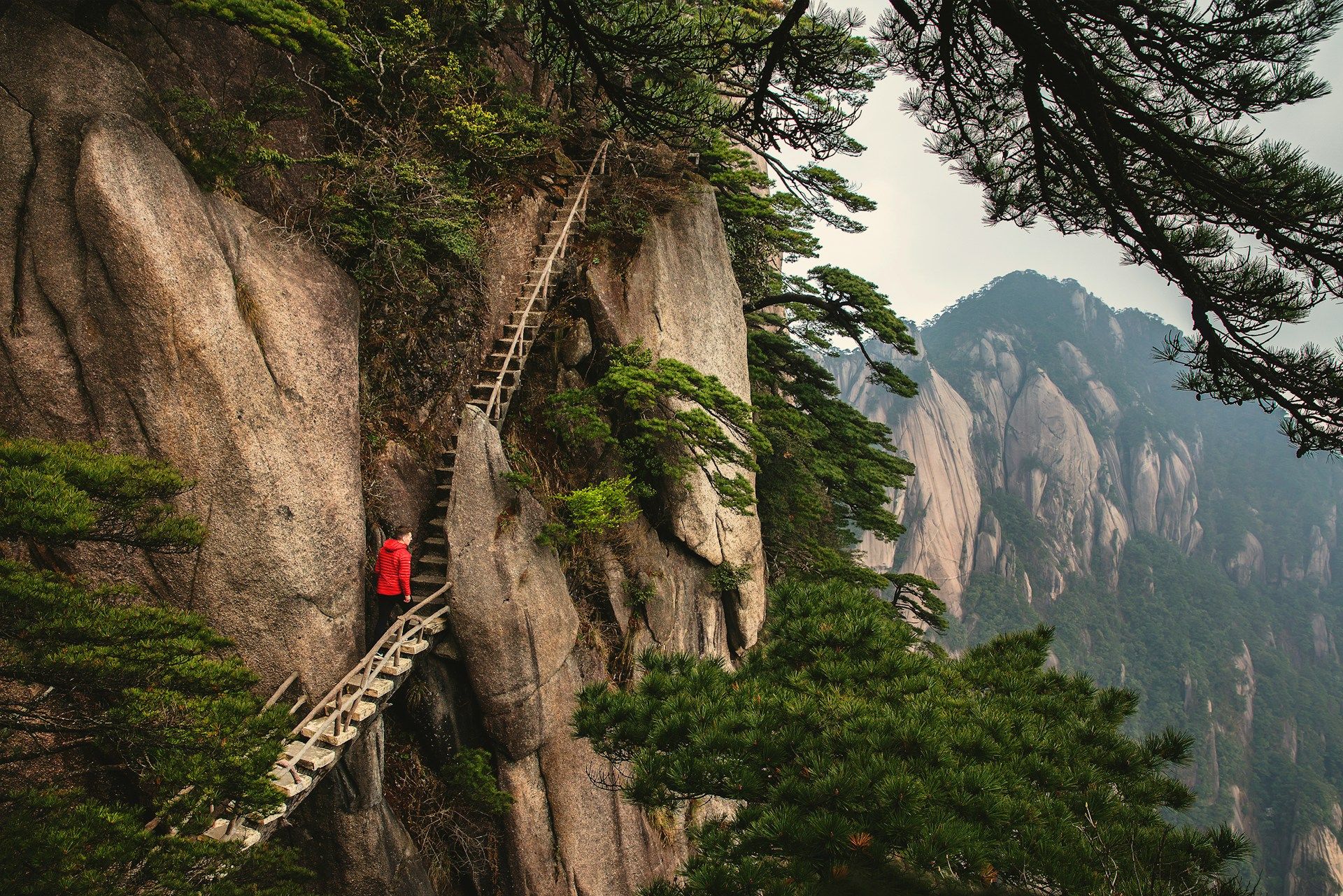
Foto di Joshua Earle su Unsplash
I Gradini Orientali
Questa è una delle salite meno frequentate sul lato est di Huangshan. È un’escursione più aspra e impegnativa, quindi non è adatta ai principianti, ma gli escursionisti esperti possono divertirsi molto. Questo sentiero attraversa pendii boscosi e formazioni rocciose uniche. È un’ottima alternativa ai percorsi occidentali più trafficati, poiché sembra più selvaggio e naturale.
Lungo il percorso, puoi trovare alcuni tesori, come sorgenti termali nascoste perfette per un po’ di relax prima o dopo l’escursione. Ci sono anche alcune antiche incisioni rupestri che portano iscrizioni fatte secoli fa da autori sconosciuti, così come alcune specie di uccelli rari e piante endemiche meno comuni in altri sentieri.
La Strada delle Tavole Occidentale
Una parte significativa di questo sentiero è ben nota a turisti e viaggiatori, ma ci sono anche sezioni più tranquille che molte persone spesso trascurano. Devi essere abbastanza a tuo agio con le altezze per percorrere questo sentiero, poiché è famoso per le sue spettacolari passerelle a strapiombo.
Se percorri l’intero sentiero, puoi godere di viste mozzafiato sul mare di nuvole con le sue cime frastagliate, e senza la folla! Ci sono anche alcune antiche rovine di templi che puoi esplorare, con molte iscrizioni scolpite.
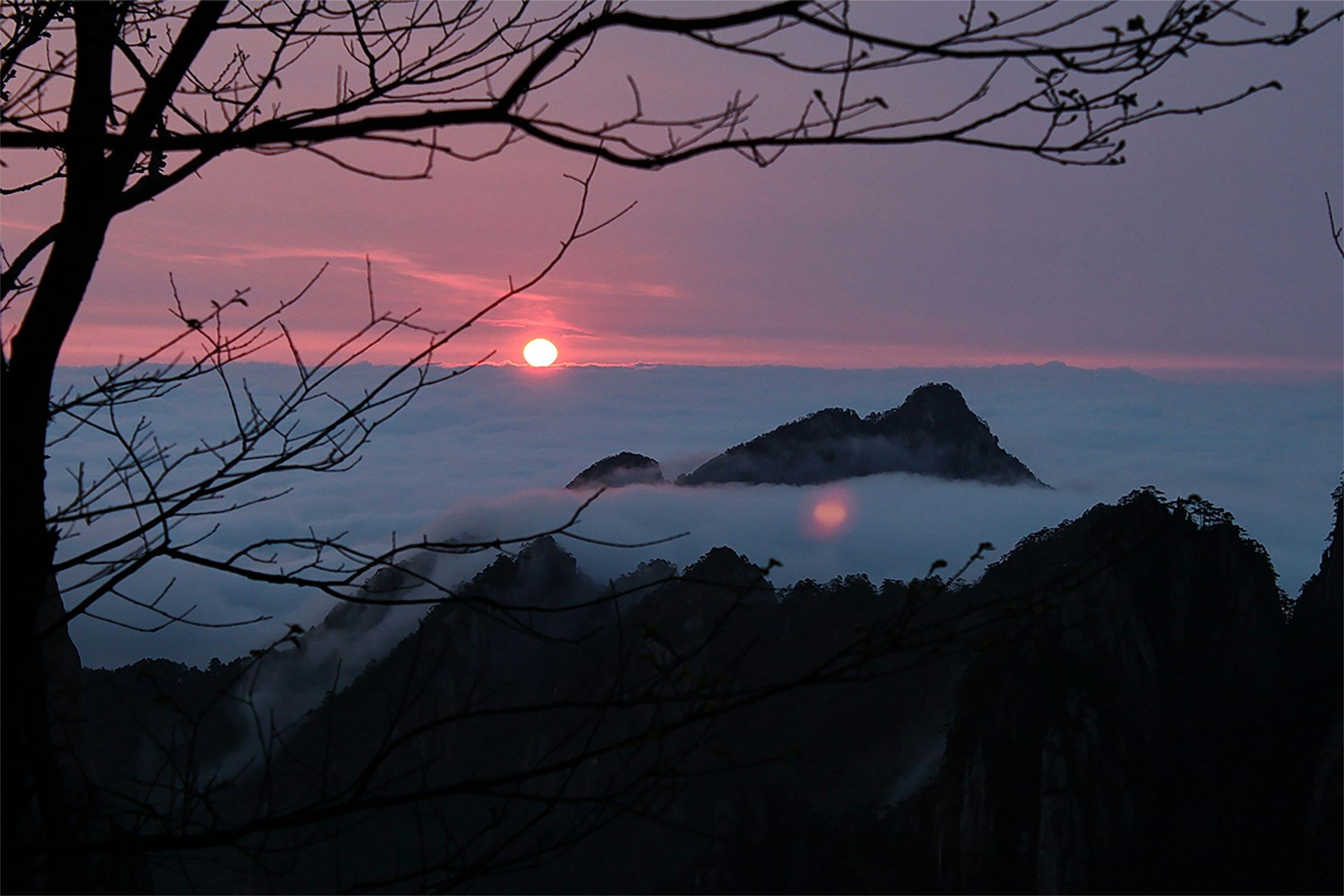
Foto di MIGUEL BAIXAULI su Unsplash
I sentieri dell’Area Scenica di Yuping
La parola Yuping significa “Schermo di Giada”, e questo sentiero è spesso trascurato dai turisti poiché è un po’ fuori dal circuito principale. A differenza di altri sentieri, che sono più drammatici con molte cime e scogliere, questo sentiero ti porta attraverso valli serene, ruscelli cristallini e formazioni di granito dolcemente ondulate.
In realtà è più adatto ai principianti, poiché offre un’esperienza di escursionismo più dolce, senza perdere in bellezza naturale. Fornisce anche accesso a piccoli villaggi e piantagioni, quindi puoi combinare le viste naturali della montagna con un’esplorazione culturale della zona.
Dove alloggiare sulla Montagna Gialla
Alcune persone scelgono di fare della loro visita a Huangshan una gita di un giorno, ma se hai intenzione di esplorare i suoi sentieri meno conosciuti e immergerti più a fondo nella magia delle montagne, è altamente raccomandato pernottare.
Città Antica di Tunxi
Questa è l’area più comune dove la maggior parte dei viaggiatori si stabilisce quando visita la Montagna. Tunxi è una città storica ai piedi della montagna, quindi dista circa 1 ora o 1 ora e 45 minuti di auto dalle aree panoramiche, ma offre una vasta gamma di alloggi.
Se soggiorni lì, puoi scegliere tra una pensione economica e hotel boutique, e hai anche facile accesso ai trasporti che ti porteranno all’area panoramica della Montagna Gialla. Inoltre, la città ha anche una ricca atmosfera culturale con strade antiche, case e mercati tradizionali da esplorare.
Hotel sulla Cima del Monte Huangshan
Ora, se desideri l’esperienza iconica di dormire sopra le nuvole, ci sono molti hotel proprio sulle cime delle montagne dove puoi soggiornare. Non aspettarti un soggiorno di lusso, poiché si tratta di hotel rustici e semplici. La loro caratteristica più attraente è la loro incredibile atmosfera e il fatto che ti mettono a pochi passi da punti incredibili per vedere l’alba e il tramonto.
Tra gli hotel più consigliati, troverai il Baihai Hotel, il più visitato, con camere semplici e viste spettacolari. Lo Xihai Hotel, con maggiore accessibilità al Canyon del Mare Occidentale e ai sentieri sulla scogliera, e il Paiyunlou Hotel, vicino al Padiglione Paiyun.
Soggiorni nei villaggi intorno alla montagna
Se apprezzi un’esperienza culturale più delle comodità moderne o di un soggiorno panoramico in cima alla montagna, puoi scegliere un soggiorno più tranquillo nei villaggi vicino alla base della montagna. Questa opzione offre l’opportunità di immergersi nella vita e nell’architettura del villaggio antico, permettendoti di esplorare l’artigianato locale, la cultura del tè e i paesaggi rurali.
La maggior parte delle opzioni sono pensioni, come la Hongcun Wang House Guesthouse, che combina lo stile tradizionale con i comfort moderni, o la Xidi Ancient Village Inn, una locanda a conduzione familiare che offre un’esperienza davvero autentica e l’opportunità di provare la cucina locale.
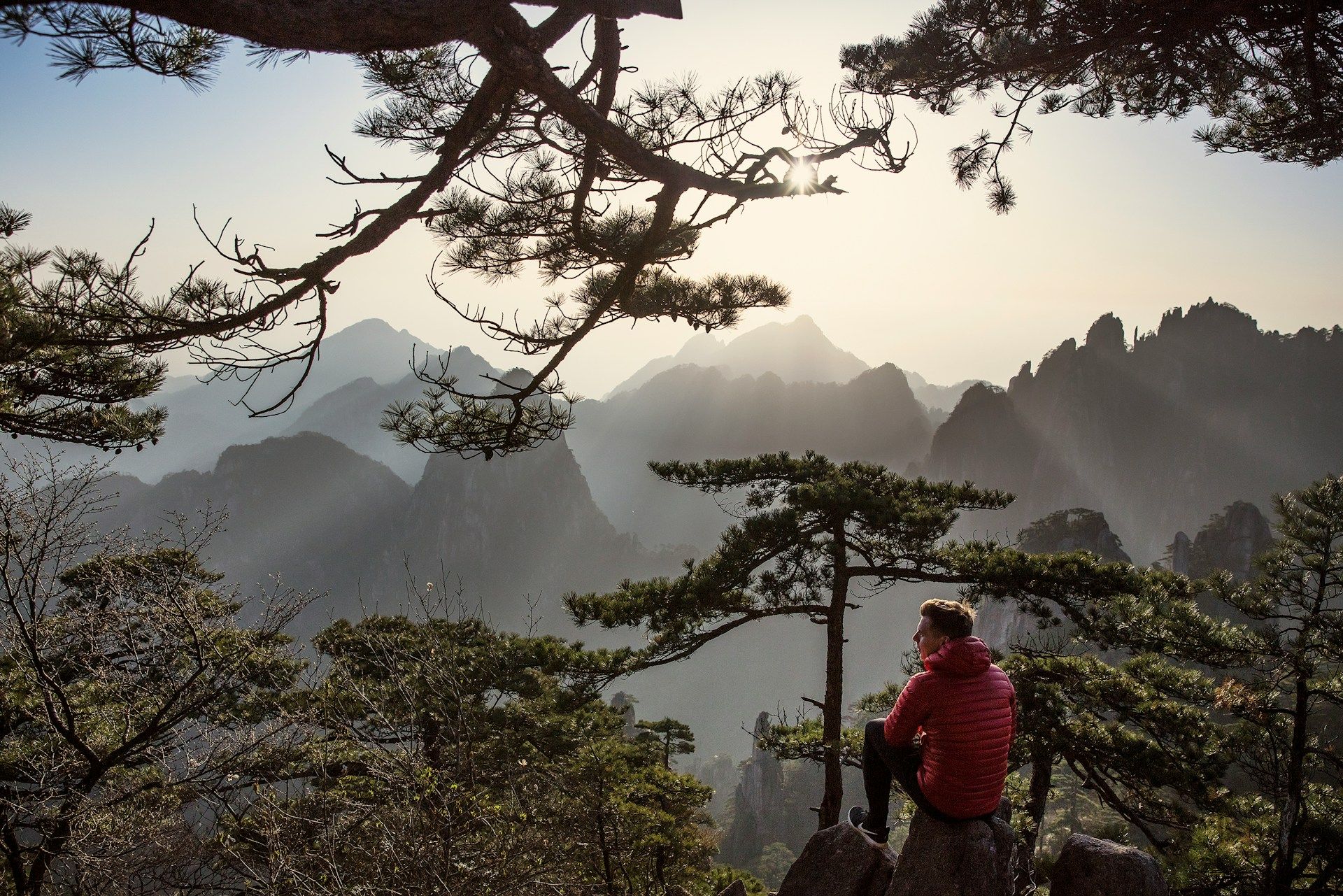
Foto di Joshua Earle su Unsplash
Curiosità sulla Montagna Gialla
Huangshan ha alcuni fatti curiosi e poco conosciuti che di solito non compaiono nelle brochure di viaggio. Per alcune persone, potrebbero non sembrare importanti, ma crediamo che arricchiscano l’esperienza di viaggio, dando più significato all’ambiente naturale e alla storia.
-
Alcuni dei pini che vedi aggrappati alle scogliere e che crescono nelle fessure delle rocce hanno un’età stimata tra 800 e 1500 anni. Poiché crescono lentamente e si adattano alla vita in quelle condizioni impossibili, sono considerati un simbolo vivente di resistenza.
-
C’è una Scala verso il Paradiso sulla Montagna Gialla, ed è assolutamente enorme. Stiamo parlando di oltre 60.000 gradini di pietra che sono stati scolpiti a mano nel corso di centinaia di anni, e puoi ancora usarli oggi per raggiungere le cime sacre. Ma la maggior parte delle persone usa le funivie.
-
È un sito naturale così potente che è stato il primo ad essere dipinto, fotografato e iscritto nella lista del Patrimonio Mondiale dell’UNESCO. Anche considerando la lunga storia della Cina, è piuttosto impressionante.
-
Se dedichi del tempo a studiare le poesie delle dinastie Tang e Song, troverai alcuni esempi su pini solitari o rocce sulla Montagna Gialla. I poeti non si limitavano a descrivere la natura, ma la usavano come mezzo di meditazione sulla vita, la solitudine, la bellezza e il nostro posto nel cosmo.

